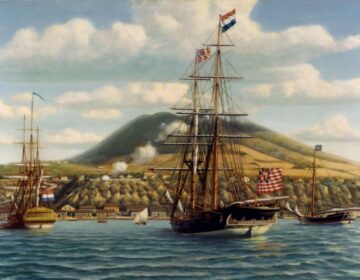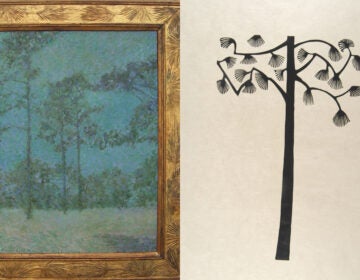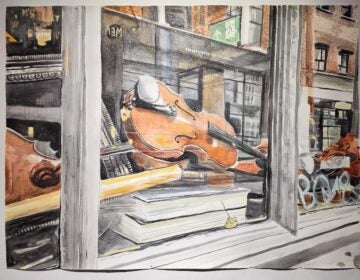Princeton opens exhibit of Howard Russell Butler’s solar eclipse paintings
-
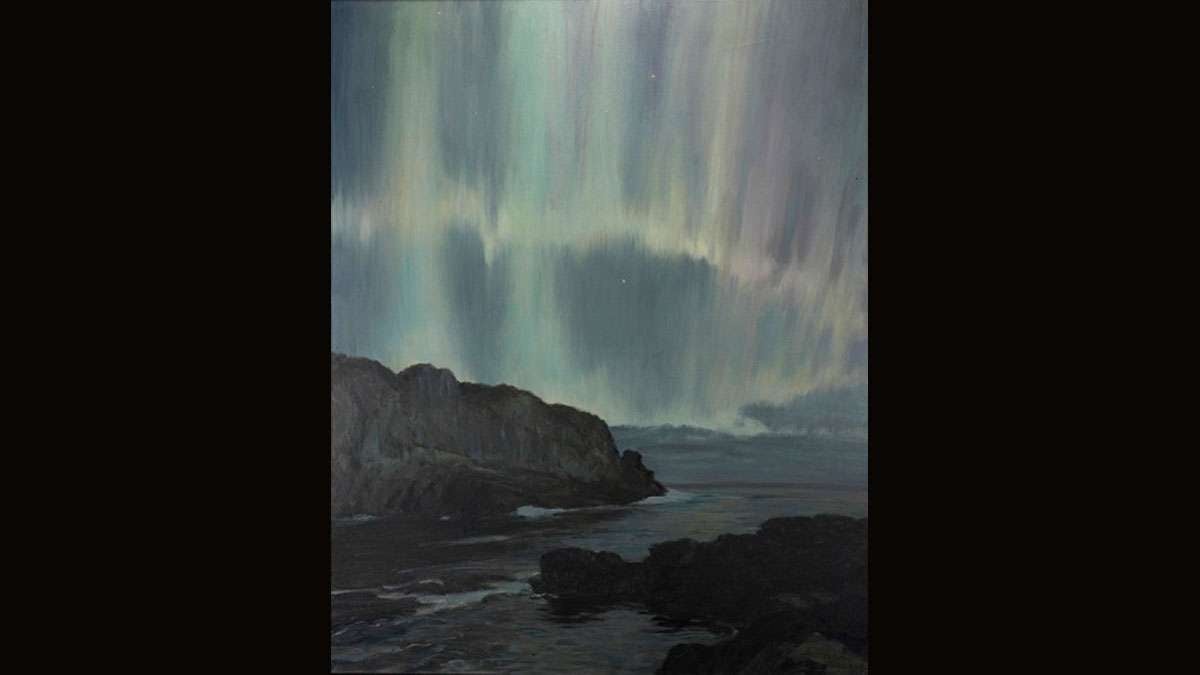
Howard Russell Butler, American, 1856–1934, Northern Lights, Ogunquit, Maine, 1919, Oil on canvas, Princeton University Art Museum, gift of H. Russell Butler, Jr., PP356
-
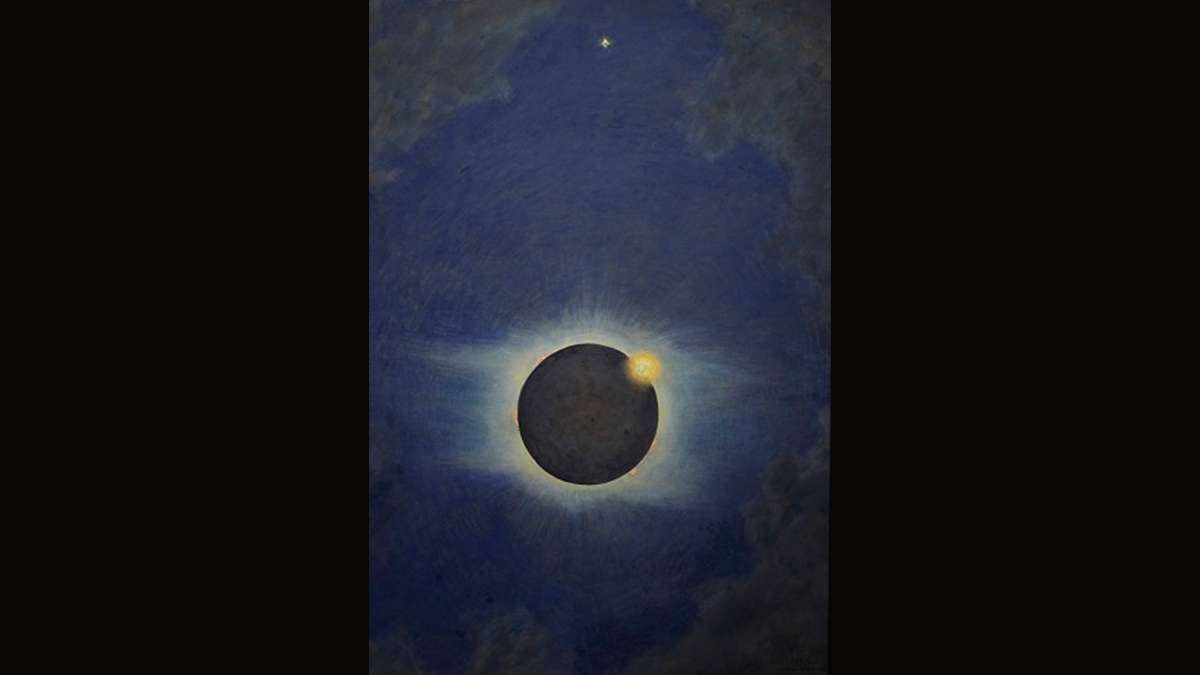
Howard Russell Butler, American, 1856–1934, Solar Eclipse, Lompoc, California, 1923, Oil on canvas, central panel of triptych, Princeton University, gift of H. Russell Butler Jr., PP351
Still trying to find the right No. 14 arc welder glasses for viewing the first solar eclipse of the century, or figuring out how you’ll project a pin hole of light onto cardboard and actually see anything? New Jersey viewing options are limited, but the Princeton University Art Museum has organized an exhibition of solar eclipses and other astronomical subjects by the influential American painter Howard Russell Butler (1856-1934).
In 1918, Butler unveiled a new kind of portrait of a very unusual sitter: the total solar eclipse. With unexpected accuracy, he captured those rare seconds when the moon disappears into darkness, crowned by the flames of the sun. Transient Effects: The Solar Eclipses and Celestial Landscapes of Howard Russell Butler, on view at the Princeton University Art Museum through Oct. 15, 2017, shares the history of Butler’s paintings and the story of the artist who created them.
Among his other accomplishments, Butler founded the American Fine Arts Society (now home to the Arts Students League of New York), was president of Carnegie Hall for nine years and served as the architectural advisor for Andrew Carnegie’s New York mansion (now home to Cooper Hewitt, Smithsonian Design Museum). He persuaded Carnegie to fund the creation of Carnegie Lake at Princeton University and supervised the lake’s construction. The Astronomy Hall for the American Museum of Natural History, which he designed, was never built, but a number of paintings intended for that space are now in Princeton’s campus collections, says Karl Kusserow, the museum’s curator of American Art.
Butler graduated from Princeton University with a degree in science in 1876, but shortly thereafter he decided to pursue a career in art. His uncle, the artist William Stanley Haseltine, created meticulous renderings of geological phenomena that underscored his belief that “every artist is also a scientist.” Butler gravitated toward capturing fixed images of ever-changing subject matter, including portraiture and marine and celestial views. As an heir to the Hudson River School and its emphasis on awe-inspiring vistas, and as a student of Frederic Edwin Church (1826-1900), Butler fused 19th-century romantic traditions with scientific inquiry, specifically astronomy.
When he undertook to paint a solar eclipse, Butler faced a seemingly impossible task: making an accurate and scientifically useful picture of a complex, transitory astronomical event that the unaided eye cannot fully perceive. Observation, intuition and artistic license played an important part in Butler’s tour-de-force paintings of solar eclipses, and the shorthand sketching technique he developed allowed him to produce highly detailed and precise paintings of the color and shape of the solar corona. In so doing, he joined the ranks of artists and other image-makers who have struggled to translate unseeable or fleeting natural phenomena into visual form for the purpose of scientific study and the dissemination of knowledge in the public sphere.
Transient Effects presents several of Butler’s solar eclipses, as well as views of Earth and Mars from their respective moons and of the Northern Lights. Butler’s astute paintings of moonscapes and views of Earth from outer space, which appeared well before astronauts Neil Armstrong and Buzz Aldrin actually landed on the moon in 1969, are remarkable records of uncanny insight and artistic power. In addition, the focused exhibition incorporates a handful of works by artists who were also interested in exploring the representation of science through artistic means, including Berenice Abbott, Harold Edgerton and Eadweard Muybridge.
“Over centuries, bringing the tools of art to the aid of the sciences has allowed all of us to better understand the world we live in,” said Museum Director James Steward. “Howard Russell Butler’s surprising and meticulous renderings of celestial phenomena established a precedent in this emerging field of visual culture, providing astronomers with important data that photography at the time could not.”
In addition to the small installation in the museum’s galleries, an online component extends the exhibition:http://artmuseum.princeton.edu/transient-effects
Still determined to view the eclipse from central New Jersey? The Princeton Public Library is hosting a Solar Eclipse Viewing Party in Palmer Square on Monday, Aug. 21, 1 p.m., in Princeton’s Palmer Square. Bring your lawn chair or blanket—protective glasses and snacks will be provided. www.princetonlibrary.org
_____________________________________________________________________
The Artful Blogger is written by Ilene Dube and offers a look inside the art world of the greater Princeton area. Ilene Dube is an award-winning arts writer and editor, as well as an artist, curator and activist for the arts.
WHYY is your source for fact-based, in-depth journalism and information. As a nonprofit organization, we rely on financial support from readers like you. Please give today.


